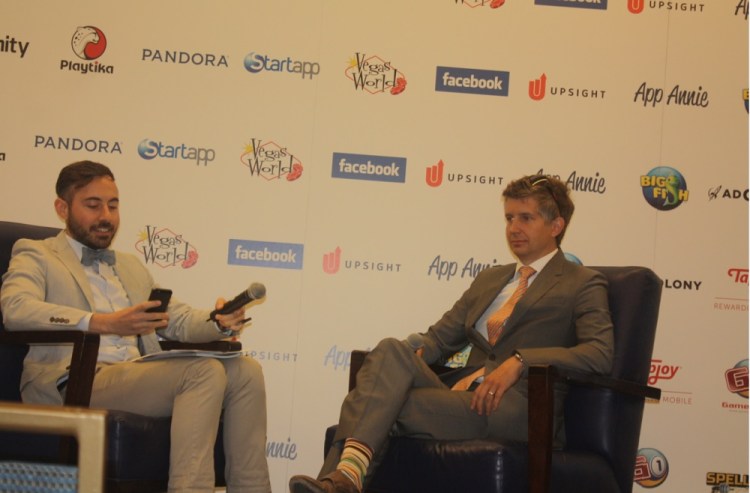Lebedev: What profession would you not like to try?
Palm: Like I say, I seriously considered working as a cashier at McDonald’s.
Lebedev: When you die, what do you want your epitaph to say?
Palm: “Try again”?
Question: Did Fabrication Games have an early iteration of Candy Crush in the works? If not, why did King buy you?
Palm: Candy Crush came about at King. It was a web game first, in 2011. The Facebook version was beginning development when we joined King in early 2012. We had the game engine for cross-platform mobile and tablet functionality, and we had an expert team for developing mobile games. We were two very good puzzle pieces to fit together. We felt that we didn’t have the skill set at all on the social side. But we had a small team that was very focused on mobile technology.
Question: What kind of features have you tried in Candy Crush that you wouldn’t like to repeat again?
Palm: I’ve gotten this question before. Basically, the stars were very much aligned for Candy Crush Saga. There’s not a whole lot of things that went wrong, looking back and seeing that it became the world’s biggest game. We’re a bit humbled by how everything connected so well over time.
I did go back to the team and asked them, “What would you say were our biggest mistakes?” One thing that came up from the original Flash version, which was made by one programmer in 2011 — that code base was actually continued and integrated into the bigger Facebook game. There was an inheritance of old code. The guy who made that code wasn’t even involved in the project anymore. It would have been much faster to throw that code away and rebuild it.
Another thing was the fact that there were two different teams, between the Facebook version and the mobile version. That meant, for instance, that we had the game calculating scores differently between platforms at one point. What we did then is move the teams together and corrected the same bugs in the mobile version that were in the Facebook version, so they’d calculate in the same way
Question: Have you ever played a Zynga game? Do you have any opinions on them?
Palm: A little bit? I played FarmVille, the first one. There’s obviously a lot of talented people at Zynga. Some of them are now working at King. I don’t have a strong opinion there, though. It’s tricky to be one company talking about another. But there’s a lot of passionate people there that I know and I’ve met. But it’s a big company. It’s hard to say something general.
Lebedev: I worked on some Zynga games.
Palm: Oh, yeah? Do you have any opinions?
Lebedev: I can’t say which ones, though, because I’d get a cease-and-desist for speaking about it. But I liked it. It was nice. Great people.
Question: Once you’ve created magic in one game like Candy Crush, what do you to re-create that kind of magic again in a completely different game?
Palm: We’ve been giving our game teams a lot of space to work on their concepts, making sure they make the best possible games they can. We’re seeing that working very well. If you look at the charts, it’s not only Candy Crush. Bubble Witch 2 is a game I’m playing a lot of myself.
Our idea is to make sure we come up with a lot of new game concepts in an early phase. We’re trying them out and trying to make them into casual social games. We see that there’s a lot of interest from people around the world. Today we have 352 million unique users, which is a humbling number to say the least. These people are hungry for new content. It’s not like they just play the game once and don’t want to try it again. They love having something to spend their time with in between the bus ride home or — well, in the U.S. you don’t ride the bus so much. Hopefully you’re not playing games while you’re driving your car.
Question: Apart from a great game concept, user acquisition is another aspect of making a great game. What do you think plays a bigger part for user acquisition — PR, ads, Facebook, viral, or cross-promotion through your own games?
Palm: The biggest channel for Candy Crush is people showing it to their friends and persuading them that this is a really good game they should download. Other than that, we’re obviously doing some advertising and PR. We feel that a broad approach has worked best for us. We work with Facebook, with PR, with advertising, and all these things come together nicely.
One difficult thing about marketing is that it’s not a linear equation. You don’t start with $100 and expect to have double the result if you go in with $200. The stakes are pretty high. But once you get to that point where have this ability—A lot of people have become aware of the game and the brand. Now we see that the cross-platform features work very well for us. When we have a popular concept, people know about King as a brand and want to play similar games. That’s an important factor now, though it wasn’t as important for Candy Crush Saga in the early days, because that was our first really big game.

VentureBeat's mission is to be a digital town square for technical decision-makers to gain knowledge about transformative enterprise technology and transact. Learn More


